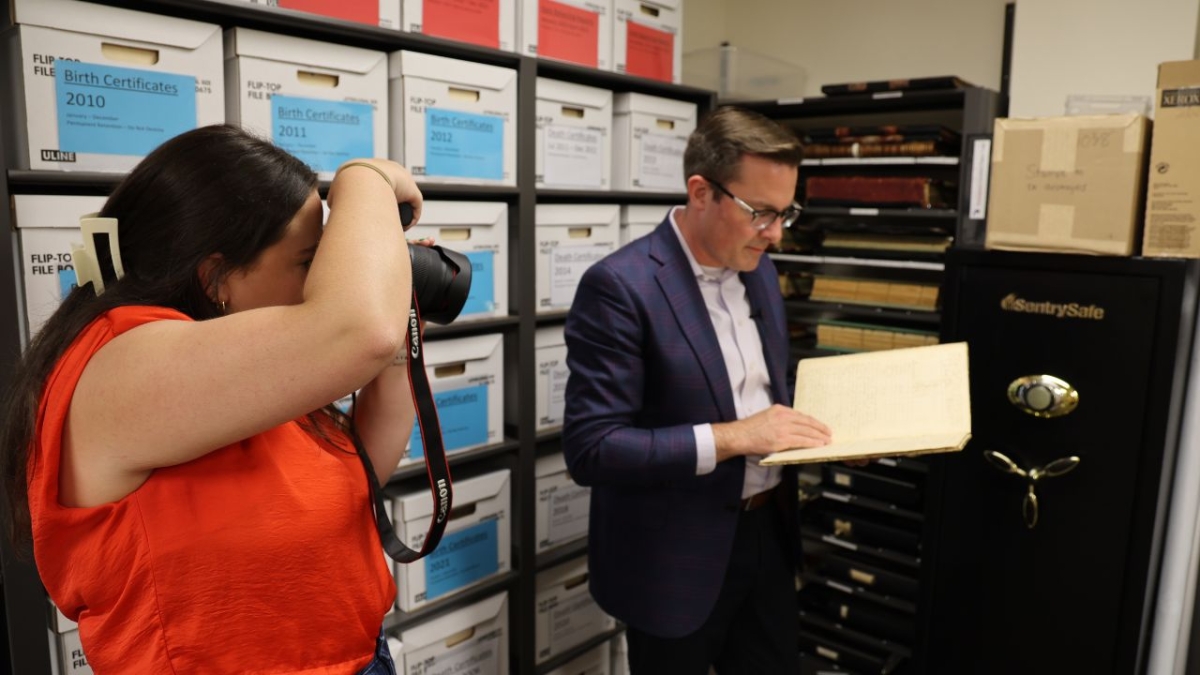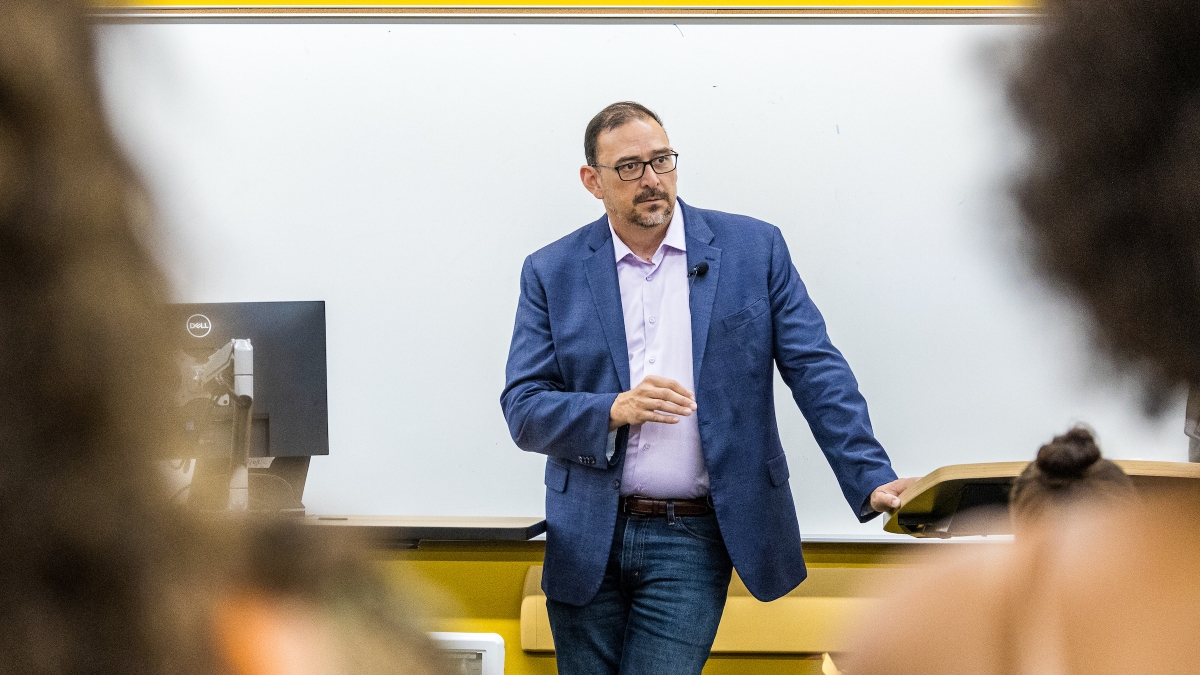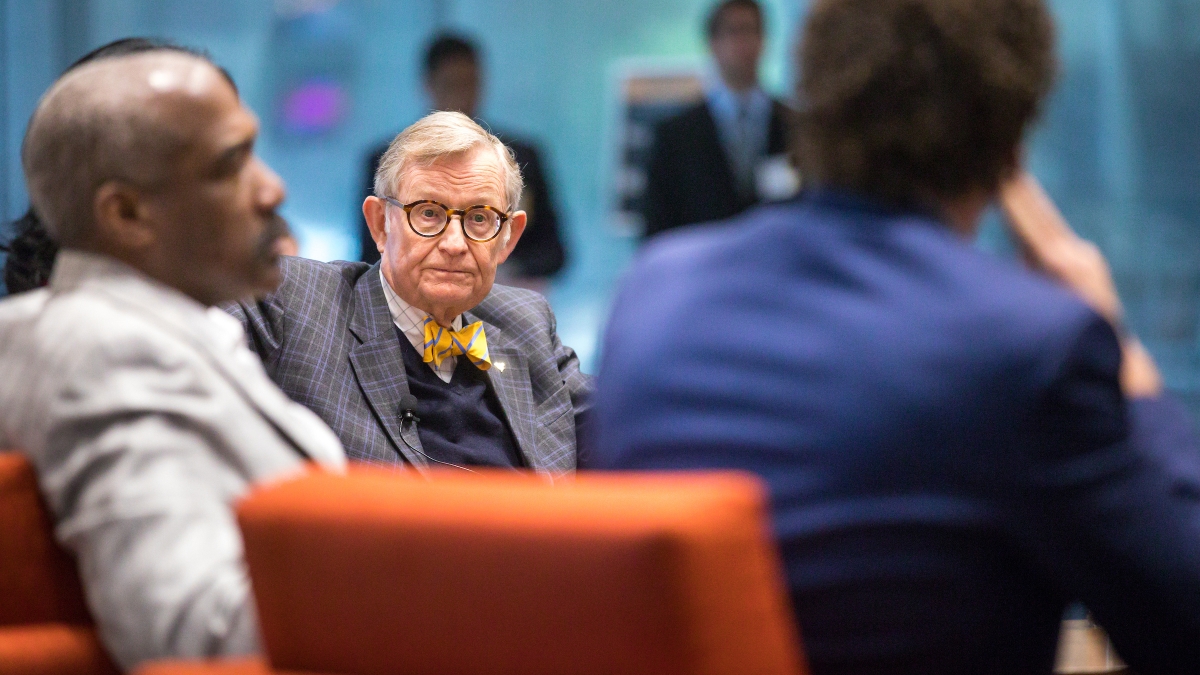A prominent leader in higher education said college sports revenue has been flourishing, but a great disparity is on the horizon as conferences align to make lucrative network deals.
“The rich will get richer, and the others will die,” E. Gordon Gee, president of West Virginia University, said Monday. “We need to come together rather than engage in hand-to-hand combat.”
Gee’s comment came at a symposium, “Full Court Press: Media, Autonomy, and the Future of College Sports” on ASU’s Downtown Phoenix campus.
The timing of the event, which was hosted by the Sports Law and Business Program at ASU’s Sandra Day O’Connor College of Law, was designed to coincide with the Final Four — the NCAA’s primary revenue generator.
The half-day conference brought together leading university presidents, athletic directors, conference commissioners and sports industry professionals to prompt an in-depth examination of college sports and where the industry could be headed in the years to come.
“By bringing together officials from both in- and outside collegiate athletics, this symposium melds the major forces influencing college sports — media, law and business,” said Glenn M. Wong, executive director of the Sports Law and Business Program.
In addition to Gee, other participants included Gene Smith, athletic director of Ohio State University; Renu Khator, chancellor and president of the University of Houston; Keith Gill, athletic director of the University of Richmond; Larry Scott, commissioner of the Pac-12; Janet Judge, president of Sports Law Associates; Mark Hollis, athletic director of Michigan State; Steve Smith, basketball analyst; Hania Poole, director of NCAA Digital and Turner Sports; Gary R. Roberts, president of Bradley University; and Kenneth Shropshire, Wharton School, University of Pennsylvania.
The panel agreed one of the most critical issues facing college sports is the widening revenue gap between the institutions in the Power 5The five conferences are the Pac-12; Big 12; Big Ten; Southeastern Conference and the Atlantic Coast Conference. conferences, and those in the remainder of the Division I Football Bowl Subdivision, formerly known as Division I-A.
Many wondered if those other schools would still be able to compete despite significant disparities.
“Financially, the model is broken and has always been dysfunctional,” Smith said. “Teams and conferences have to stay strong.”
Smith suggested regionalizing the conferences — an approach Division II schools have thrived on for years — to ensure that schools in every region have fair access to championships.
Regionalization would also reduce the amount of time student-athletes spend on the road in competition and allow them to better enjoy the college experience, Khator said.
“This takes a toll on a student-athlete’s time demands,” Khator said. “What comes first — academics or athletics?”
The panel also tackled issues such as diversity in administration, the power of autonomy, Title IX, social justice and the expanding role of digital media.
Poole said the NCAA now has 15 different media and digital platforms, and millennials are driving the way in which we view sports.
“People prefer to watch the game in many different ways as it fits their lifestyle,” Poole said.
Wong said by weaving these perspectives together at one event, participants gained a better understanding of why change is occurring and where the industry may be headed.
“Linking all of these individuals and their ability to make industry-shifting decisions highlights the significance of our symposium,” Wong said.
Participants also took time to praise Phoenix as the host site for the Final Four weekend.
“This Final Four is just a phenomenon,” Smith said, “and it’s been a great run.”
For a detailed look at the symposium's three panels, click here.
Top photo: West Virginia University President E. Gordon Gee listens during a panel discussion on the state of collegiate sports at the "Full Court Press: Media, Autonomy, and the Future of College Sports" symposium Monday at the Beus Center for Law and Society in downtown Phoenix. The program featured officials from both the inside and outside of collegiate athletics, and it focused on major influences on college sports: media, law and business. Photo by Charlie Leight/ASU Now
More Law, journalism and politics

ASU's Carnegie-Knight News21 project examines the state of American democracy
In the latest project of Carnegie-Knight News21, a national reporting initiative and fellowship headquartered at Arizona State University’s Walter Cronkite School of Journalism and Mass Communication…

Arizona secretary of state encourages students to vote
Arizona Secretary of State Adrian Fontes looked right and left, taking in the more than 100 students who gathered to hear him speak in room 103 of Wilson Hall.He then told the students in the Intro…

Peace advocate Bernice A. King to speak at ASU in October
Bernice A. King is committed to creating a more peaceful, just and humane world through nonviolent social change.“We cannot afford as normal the presence of injustice, inhumanity and violence,…
